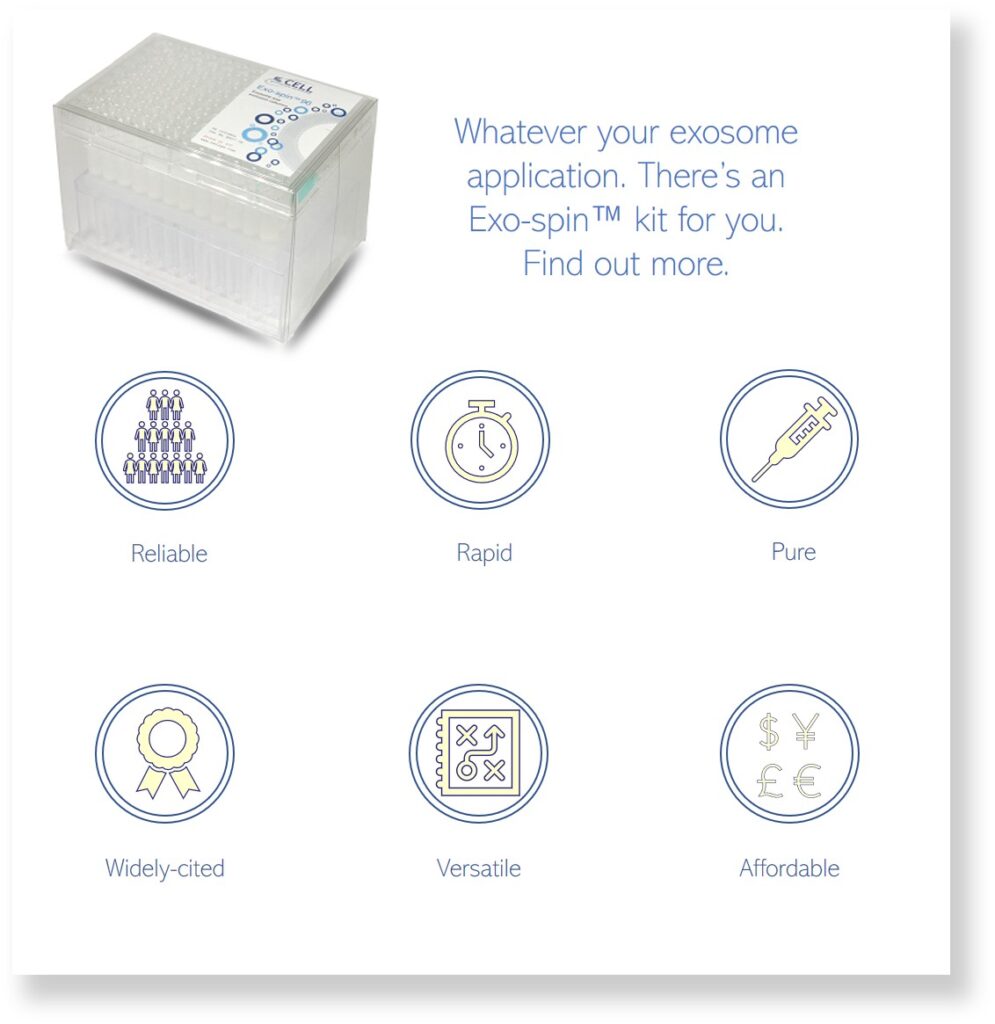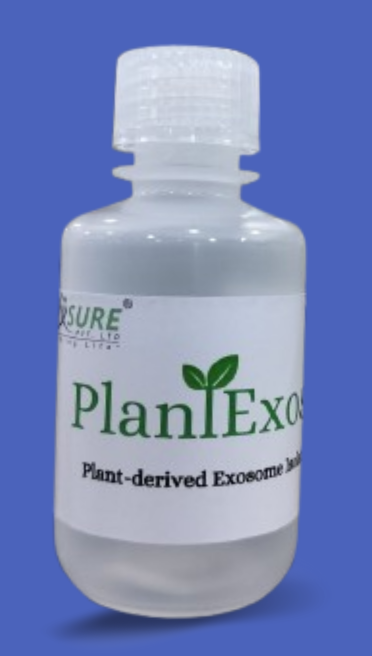
Cell Guidance Systems is now offering a range of high-quality and well-characterized freeze-dried exosome samples from human cancer cell lines for research applications. These Instant exosome™ products are isolated using Exo-spin™ kits following a combination of precipitation and size exclusion chromatography (SEC).
Exosomes are a subtype of Extracellular vesicle (EV), lipid membrane-enclosed compartments ranging in size from 50- to 1000 nm in diameter. EVs are released from every cell type and tissue, and their contents are incredibly diverse. They contain cellular components such as proteins, bioactive lipids, and nucleic acids originating from the releasing cell. Exosomes transport these molecules between cells, and are therefore important in cell signalling processes.
Each batch of Instant exosomes is quality tested and guaranteed to be of the highest standard. The exosome samples are characterized for:
- Expression of commonly expressed exosomal markers (CD9, CD63 and CD81) using the ExoLISA™ exosome detection assay. Each sample expresses of the commonly expressed exosomal markers CD9, CD63 and CD81. This also ensures that other surface proteins that are present should be detectable.
- Overall protein content using a BCA assay.
- Particle concentration and size distribution by nanoparticle tracking analysis (NTA) using a Zetaview® instrument from Particle Metrix GmbH.
These samples are freeze-dried to maximise their stability for storage and shipping, enabling these products to be stored at 4oC until reconstituted. Instant exosome™ samples are simply reconstituted by adding water. Exosome samples are available from widely used human cancer cell lines. Currently, isolated exosomes are available from
- COLO205 human colon carcinoma
- LnCAP human prostate carcinoma
- A375 human malignant melanoma
There is a wide and diverse range of applications for this range of Instant exosome™ samples, from assay calibration to protein marker analysis. For more information, please visit the Instant exosomes™ page.
IMAGE: Shutterstock

- 0 Comments
- exosome



